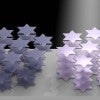
Ambient light alters refraction in 2D material
Microscopic crystals in tantalum disulfide have a starring role in what could become a hit for 3D displays, virtual reality and even self-driving vehicles.

Ambient light alters refraction in 2D material
Microscopic crystals in tantalum disulfide have a starring role in what could become a hit for 3D displays, virtual reality and even self-driving vehicles.
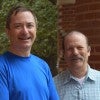
Researchers set sights on theory of deep learning
Rice's Richard Baraniuk and Moshe Vardi are part of a multiuniversity team of engineers, computer scientists, mathematicians and statisticians tapped by the Office of Naval Research to develop a principled theory of deep learning.
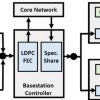
NSF backs first community platform for smarter wireless
Rice University researchers, with National Science Foundation backing, develop a community platform, 3DML, to accelerate machine learning for next-generation wireless networks and mobile applications.
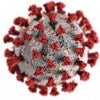
Rice computer science lab collaborates on design of novel SARS-CoV-2 test
Rice computer scientists are collaborating with molecular diagnostics company Great Basin Scientific to streamline the development of COVID-19 testing.

As Hurricane Laura nears Texas coast, experts available from Rice
HOUSTON — (Aug. 25, 2020) — As Hurricane Laura nears the Texas coast, Rice University has a number of experts that can discuss a wide variety of storm-related topics.
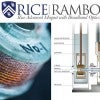
Rice’s RAMBO-II: A sequel better than the original
First-of-its-kind spectrometer is getting stronger magnets, wider range of lasers.
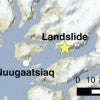
Small quake clusters can’t hide from AI
A deep learning algorithm developed at Rice University analyzes data from a deadly landslide in Greenland to show how it may someday predict seismic events like earthquakes and volcanic eruptions.

Oden named Biomedical Engineering Society fellow
Professor Oden is director of the Oshman Engineering Design Kitchen and co-director of the Rice 360˚ Institute for Global Health.
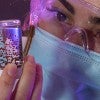
Heart attack damage reduced by shielded stem cells
Bioengineers and surgeons from Rice University and Baylor College of Medicine have shown in rodents that a four-week shielded stem cell treatment can reduce damage caused by a heart attack.
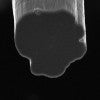
No limit yet for carbon nanotube fibers
Rice University researchers report advances in their quest to make the best carbon nanotube fibers for industry.

Engineers enlist fungi to advance against disease
Rice University engineers find the mechanism in fungus that produces a potential drug scaffold. The National Institutes of Health awards a multiyear grant to the lab to continue its work.

Rice alumna Villalobos earns White House mentoring award
Maria “Cristina” Villalobos, a Rice graduate in computational and applied mathematics (CAAM), has received the Presidential Award for Excellence in Science, Mathematics and Engineering Mentoring from the White House Office of Science and Technology Policy.
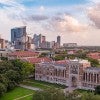
FDA OKs manufacturer’s version of Rice ventilator
An enhanced version of the ApolloBVM designed by Rice University engineers has received Emergency Use Authorization (EUA) by the U.S. Food and Drug Administration as an emergency resuscitator for use during the COVID-19 pandemic.
Ghasempour receives 2020 Marconi Society Young Scholar Award

Galveston Bay Park is a 'vision' of Houston's future
An ambitious plan to shield Houston from a devastating hurricane by creating Galveston Bay Park, a 10,000-acre public park on a chain of man-made islands, earned top honors in the international design competition Houston 2020 Visions.